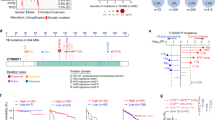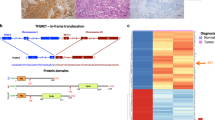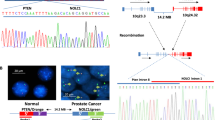Abstract
The RET proto-oncogene encodes a Tyrosine Kinase Receptor (RTK) which plays an important function in the proliferation and/or differentiation of neuroectodermic cells. Germline mutation of a methionine to a threonine within the RET TK domain predisposes to the Multiple Endocrine Neoplasia type 2B (MEN 2B). It has been demonstrated that, unlike c-Ret, the MEN 2B mutated Ret displays constitutive TK activity, tyrosine autophosphorylation and transforms fibroblasts. However, this oncoprotein is more than a fully activated wild-type (WT) Ret TK since it also displays modified substrate specificity. Change in substrate specificity leads to the tyrosine autophosphorylation of MEN 2B Ret on new sites as well as the phosphorylation of several novel downstream targets. But, none of these substrates have been identified and the ability of MEN 2B Ret phosphoprotein to interact with Src Homology 2 (SH2) domain containing molecules has been poorly investigated. In this report, using a constitutively activated Ret TK form, Ret-ptc 2, we demonstrate that the MEN 2B as the activated WT Ret TK binds to several SH2 signalling proteins such as Shc, Grb-2, Phospholipase Cγ, Crk and Nck. However, in contrast to the activated WT form, expression of the MEN 2B mutated Ret-ptc 2 results in the tyrosine phosphorylation of a panel of proteins which interestingly interact with Crk and Nck. We identified Paxillin, a cytoskeletal protein as one of the Crk associated proteins that is dramatically phosphorylated in MEN 2B but not in WT Ret expressing cells. These data suggest that MEN 2B mutated Ret triggers distinct signalling pathways that might be related to its transforming power.
This is a preview of subscription content, access via your institution
Access options
Subscribe to this journal
Receive 50 print issues and online access
$259.00 per year
only $5.18 per issue
Buy this article
- Purchase on Springer Link
- Instant access to full article PDF
Prices may be subject to local taxes which are calculated during checkout
Similar content being viewed by others
Author information
Authors and Affiliations
Rights and permissions
About this article
Cite this article
Bocciardi, R., Mograbi, B., Pasini, B. et al. The multiple endocrine neoplasia type 2B point mutation switches the specificity of the Ret tyrosine kinase towards cellular substrates that are susceptible to interact with Crk and Nck. Oncogene 15, 2257–2265 (1997). https://doi.org/10.1038/sj.onc.1201413
Received:
Revised:
Accepted:
Issue Date:
DOI: https://doi.org/10.1038/sj.onc.1201413
Keywords
This article is cited by
-
Nck adapter proteins: functional versatility in T cells
Cell Communication and Signaling (2009)
-
Evolvable signaling networks of receptor tyrosine kinases: relevance of robustness to malignancy and to cancer therapy
Molecular Systems Biology (2007)
-
RET Signaling in Endocrine Tumors: Delving Deeper into Molecular Mechanisms
Endocrine Pathology (2007)
-
Evaluation of potential mechanisms underlying genotype–phenotype correlations in multiple endocrine neoplasia type 2
Oncogene (2006)
-
Mechanisms of Disease: cancer targeting and the impact of oncogenic RET for medullary thyroid carcinoma therapy
Nature Clinical Practice Oncology (2006)



